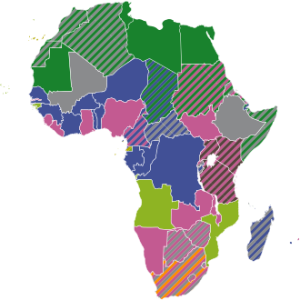Teaching African languages to children in Europe

Teaching African languages to children alongside European languages is crucial in preserving cultural heritage and fostering a sense of identity. African languages carry with them the traditions, histories, and worldviews of diverse communities. By learning their native languages, children can connect more deeply with their ancestry and cultural practices, ensuring that these rich traditions are not lost in globalization. Moreover, being bilingual or multilingual enhances cognitive development, as it improves problem-solving skills, creativity, and mental flexibility. In a multicultural world, the ability to understand and appreciate different languages and cultures can lead to greater empathy and social harmony.
Furthermore, teaching African languages alongside European languages can provide significant economic and social advantages. Proficiency in multiple languages opens up broader career opportunities in a globalized economy, where companies often seek employees who can communicate with diverse client bases and navigate different cultural contexts. Bilingual individuals can act as bridges in regions where African and European languages coexist, facilitating better communication and understanding between communities. Additionally, promoting African languages in education helps counteract the historical marginalization of these languages, fostering a more inclusive and equitable society. This dual-language approach can empower individuals and communities, ensuring that African languages continue to thrive and contribute to the global cultural mosaic.

Tips on teaching African languages to children in Europe:
Cultural Immersion and Contextual Learning: Introducing African languages to European children can be significantly enhanced through cultural immersion and contextual learning. Incorporating elements of African culture, such as music, dance, stories, and traditions, into the curriculum helps create a more engaging and relatable learning environment. For instance, using songs in Swahili or folktales in Yoruba can make language learning more enjoyable and memorable. This approach facilitates language acquisition and fosters a deeper appreciation for the cultural heritage associated with the language (Garcia & Wei, 2014). Studies have shown that contextual learning aids in better retention and understanding of the language being taught (Krashen, 1982).
Interactive and Technological Tools: Utilizing interactive and technological tools can greatly enhance the learning experience for children. Language learning apps, online games, and virtual reality experiences can make the process more dynamic and interactive. For example, apps like Duolingo and Babbel offer Swahili and other African languages, providing a gamified learning experience that keeps children engaged (Chapelle, 2001). Additionally, incorporating video lessons and interactive whiteboards can cater to various learning styles, making the language learning process more inclusive and effective (Gee, 2003).
Collaborative Learning and Peer Interaction: Encouraging collaborative learning and peer interaction can significantly improve the effectiveness of teaching African languages to European children. Group activities, language clubs, and paired conversations can create a supportive and interactive learning environment. Research has shown that peer interaction promotes language practice and helps learners gain confidence in their speaking abilities (Vygotsky, 1978). Furthermore, collaborative projects, such as creating a cultural presentation or participating in a language exchange program, can provide practical application of the language skills being learned (Johnson & Johnson, 1999).
References
Chapelle, C. (2001). Computer Applications in Second Language Acquisition: Foundations for Teaching, Testing and Research. Cambridge University Press.
Garcia, O., & Wei, L. (2014). Translanguaging: Language, Bilingualism and Education. Palgrave Macmillan.
Gee, J. P. (2003). What Video Games Have to Teach Us About Learning and Literacy. Palgrave Macmillan.
Johnson, D. W., & Johnson, R. T. (1999). Learning Together and Alone: Cooperative, Competitive, and Individualistic Learning. Allyn & Bacon.
Krashen, S. D. (1982). Principles and Practice in Second Language Acquisition. Pergamon Press.
Vygotsky, L. S. (1978). Mind in Society: The Development of Higher Psychological Processes. Harvard University Press.

